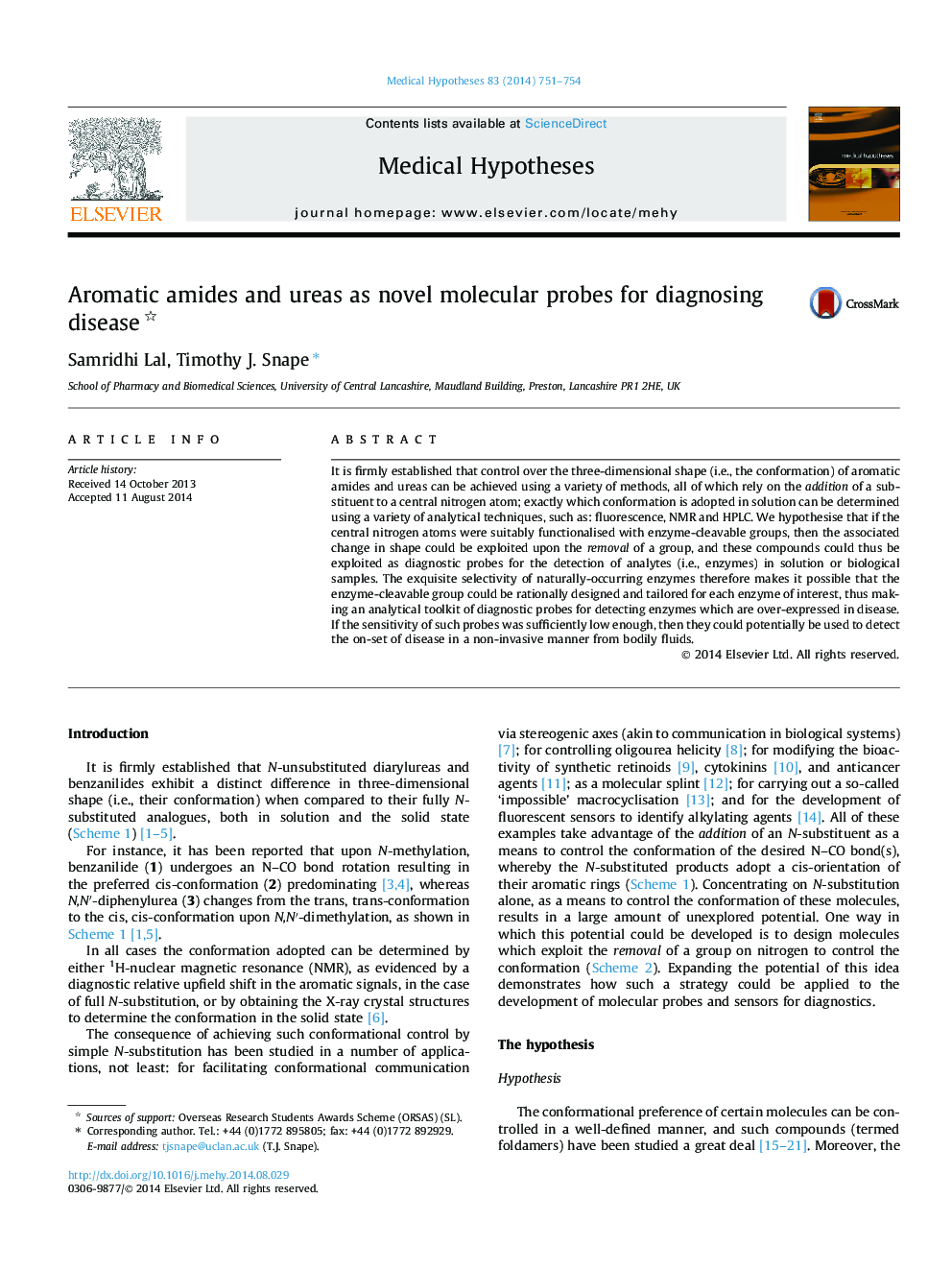| Article ID | Journal | Published Year | Pages | File Type |
|---|---|---|---|---|
| 5811560 | Medical Hypotheses | 2014 | 4 Pages |
It is firmly established that control over the three-dimensional shape (i.e., the conformation) of aromatic amides and ureas can be achieved using a variety of methods, all of which rely on the addition of a substituent to a central nitrogen atom; exactly which conformation is adopted in solution can be determined using a variety of analytical techniques, such as: fluorescence, NMR and HPLC. We hypothesise that if the central nitrogen atoms were suitably functionalised with enzyme-cleavable groups, then the associated change in shape could be exploited upon the removal of a group, and these compounds could thus be exploited as diagnostic probes for the detection of analytes (i.e., enzymes) in solution or biological samples. The exquisite selectivity of naturally-occurring enzymes therefore makes it possible that the enzyme-cleavable group could be rationally designed and tailored for each enzyme of interest, thus making an analytical toolkit of diagnostic probes for detecting enzymes which are over-expressed in disease. If the sensitivity of such probes was sufficiently low enough, then they could potentially be used to detect the on-set of disease in a non-invasive manner from bodily fluids.
